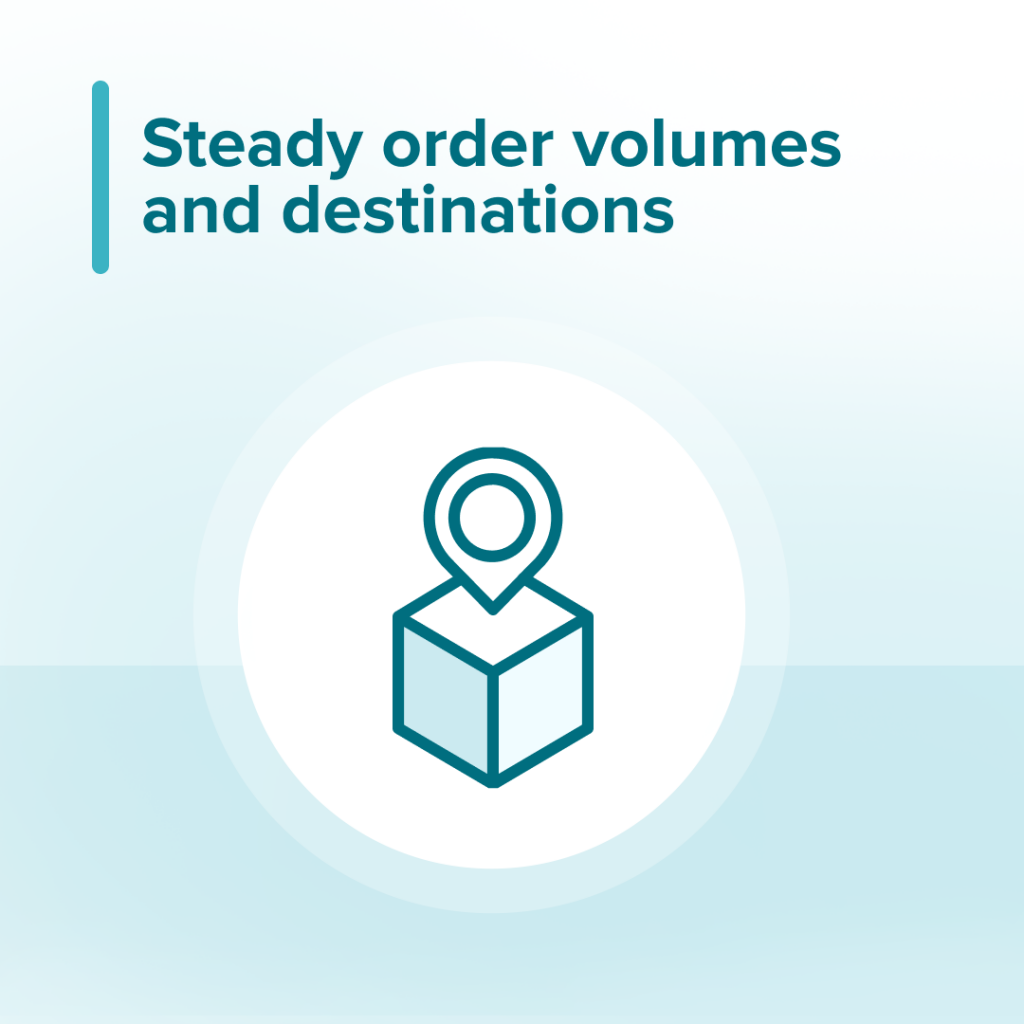

In trucking, the meaning of backhauling is, the journey of a transportation vehicle from its destination back to its original point of departure A backhaul truck can use the same route to transport a full load, a partial truckload, or less than a truckload.

Backhauling transport requires organizing roundtrip hauls and laying out routes to ensure that products are transported on each leg of a truck’s journey. This boosts vehicle and driver utilization, which improves productivity and minimizes unnecessary trips, hence reducing fuel consumption, which is a much needed respite considering the ever rising fuel prices.
Backhauling needs more coordination than sending trucks out to accomplish one haul at a time, but the rewards are substantial. Now that we know what backhauling is, let’s see why you should implement backhaul transport to improve fleet operations:
- Planning optimal loads reduces wasted fuel, resulting in financial savings and less environmental impact.
- It also enhances operational efficiency by maximizing equipment and personnel use, resulting in increased output and income.
- It also improves customer experience by predicting precise ETAs and delivering on time.
What difficulties are faced by drivers during backhauling?
Essentially, dispatchers are supposed to perform some sort of logistical magic. Commercial vehicles should be loaded when they are on the road. Backhauling and leveraging your freight resources to the delivery point and back is a fantastic idea in theory, but in practice it offers a slew of logistical issues. Among these difficulties are the following:
- Supply and demand must be matched to the specific route of shipping.
- Finding backhaul freight outside of established shipper partnerships
- Locating backhauling shipments that meet the standards and rules of your small fleet’s cars
While fleet managers do face significant issues in backhauling, drivers do tend to face difficulties. Some of which are:
- Subpar Vehicle Conditions: Since backhaul freight aims to eliminate any free trips, vehicle maintenance is often neglected. This majorly contributes to road accidents, endangering the life and health of the drivers.
- Failure to Factor in Road Conditions: The state roads, as well as those connecting villages and small towns, are seriously damaged. They can harm not just the vehicle but also the drivers’ health, making their life more difficult. To ensure that truck drivers travel safely on risky roads, always carefully plan the journey, taking into account the road and weather conditions.
- Issues In-Transit: Commercial vehicle drivers must go through numerous states in India, passing through several checkpoints along the way. The authorities stationed at these checkpoints can be extremely biased toward truck drivers, especially if they are unfamiliar with the local rules.
How to optimize your strategy for backhauling logistics?
Backhauls are one of the most expensive charges for supply chain operators. Our clients frequently ask us how they may develop strategies that reduce the load of back haul routes. We can assist you in not only saving money on backhauls, but also increasing your income stream on the return trip! This is how:

Steady order volumes and destinations
The simplest approach to ensure that your return trip is always optimized is to maintain your back haul routes consistent with your other routes. Contract with clients who transmit consistent volumes to the same destinations on a regular basis, if possible. A consistent flow of freight allows you to plan routes more efficiently, both on the way there and on the way back.

Route planning using AI
AI machines can instantly assess vehicles, routes, intervals, and volumes to identify the quickest and most cost-effective path to take. Back haul routes have grown significantly easier since the installation of supply chain artificial intelligence, and it will only become better as more data is saved in the cloud. You can also leverage this to ensure proper driver scheduling so as to not overwhelm certain personnel.
Arrange backhauls on off-days
Because freight is more likely to be under time pressure to get to clients, you may not always have influence over the schedule for transporting products to their initial destination. However, you may have a little more leeway with the backhaul, and this is where you may save a little money on shipping charges. We advocate shipping on off-days if you can schedule the backhauling ahead of time (to return products or bring back another client’s goods). This reduces traffic on the roadways and in distribution facilities, saving time and resources.
Steady client relationships
Customer loyalty is one of the finest ways to keep your trucks packed on the way home when it comes to backhauling. Your clients will only utilize you, which implies they will engage with you to do their return items or bring goods at least partially back.
What is the difference between Backhaul & Fronthaul?
Fronthaul or Headhaul: Dedicated trucks and truckload shipments do not price based just on distance or day of the week. They also charge differently based on whether the load is a backhaul or a headhaul. Most carriers like to fill their schedules with headhaul shipments. This signifies that a package is being delivered to a close place, usually within the same city or to a neighboring town.
The main reason headhaul deliveries are advantageous is because the close destination equals a shorter return journey. The more time a vehicle travels without carrying cargo, the more money the carrier loses on administrative expenditures.
Backhaul: A backhaul cargo is one that is made on the way back home. Having an abundance of backhaul planning assures that there is less transit without freight. Truckers are typically dispatched for a backhaul while en route from a headhaul. In general, backhaul cargo rates are lower. Customers benefit from this, but carriers benefit from a lesser profit margin than with headhaul.
FAQ
What is backhaul distribution?
The return journey of a commercial vehicle from its intended destination to its original point of departure is referred to as backhaul. Carriers can use the same route to transport a full load, a partial truckload, or less than a truckload.
What is backhaul load?
The cargo transported during a backhaul is known as the backhaul load.
What is backhaul & fronthaul?
Fronthaul: Most carriers like to fill their schedules with headhaul shipments. This signifies that a package is being delivered to a close place, usually within the same city or to a neighboring town.
Backhaul: Transportation of cargo carried out while movement of commercial vehicles from the intended destination back to the original point of departure is called backhaul.